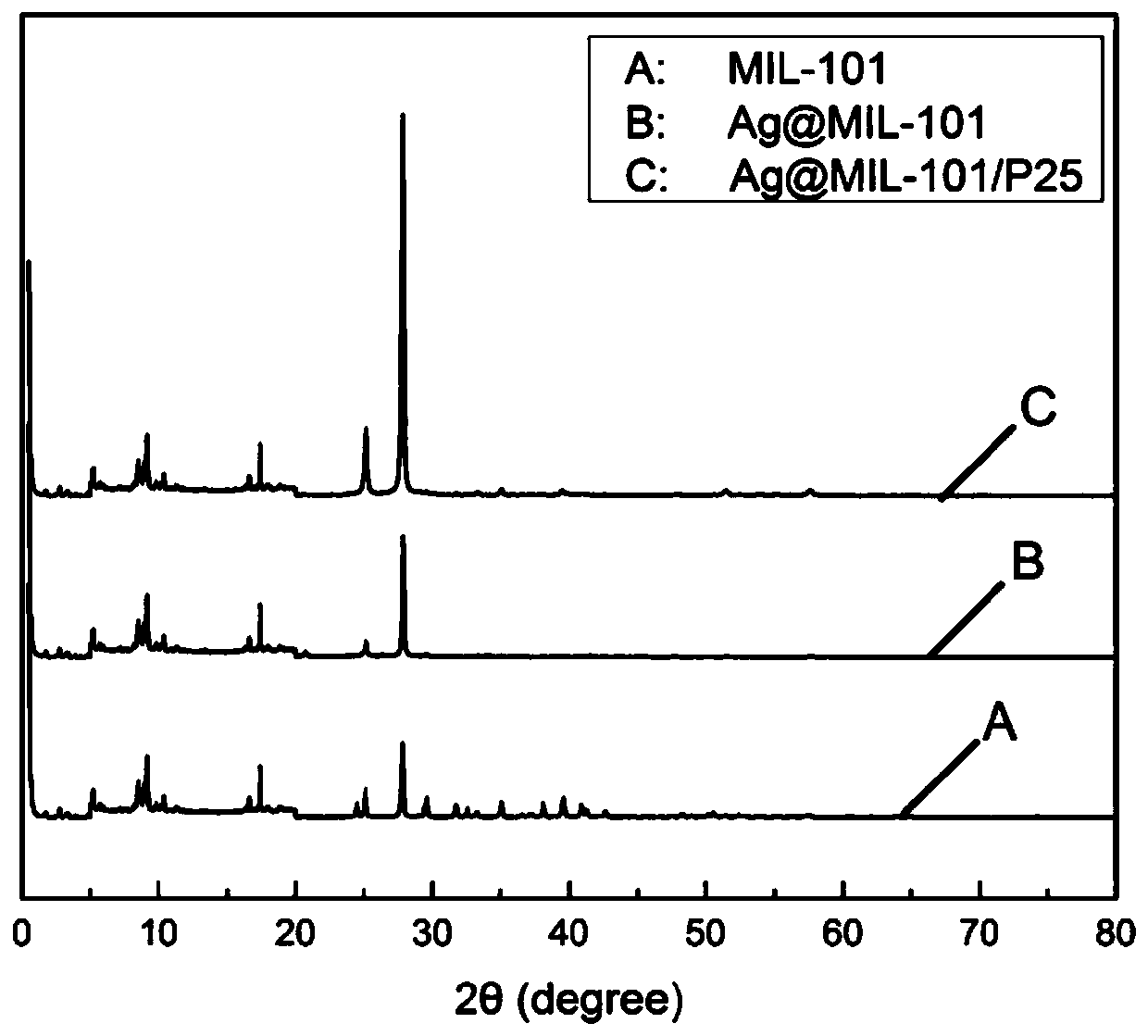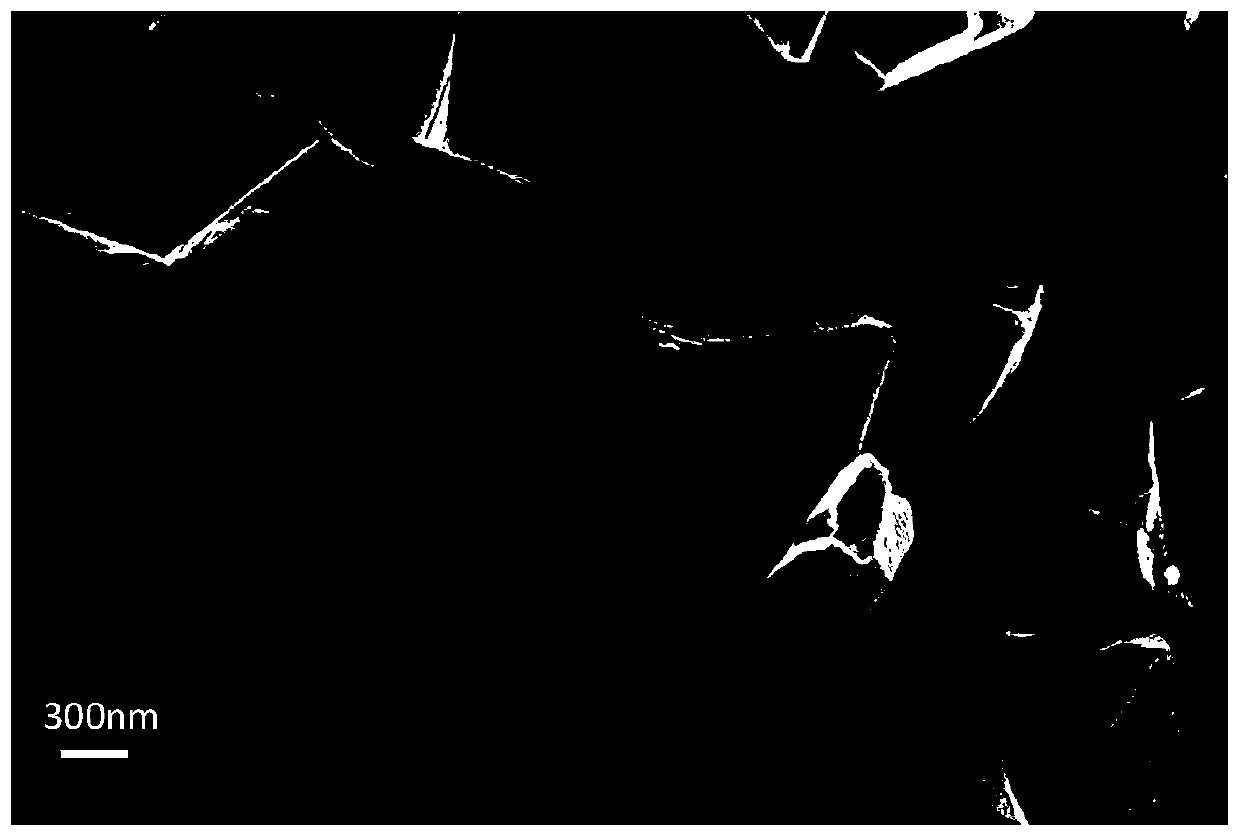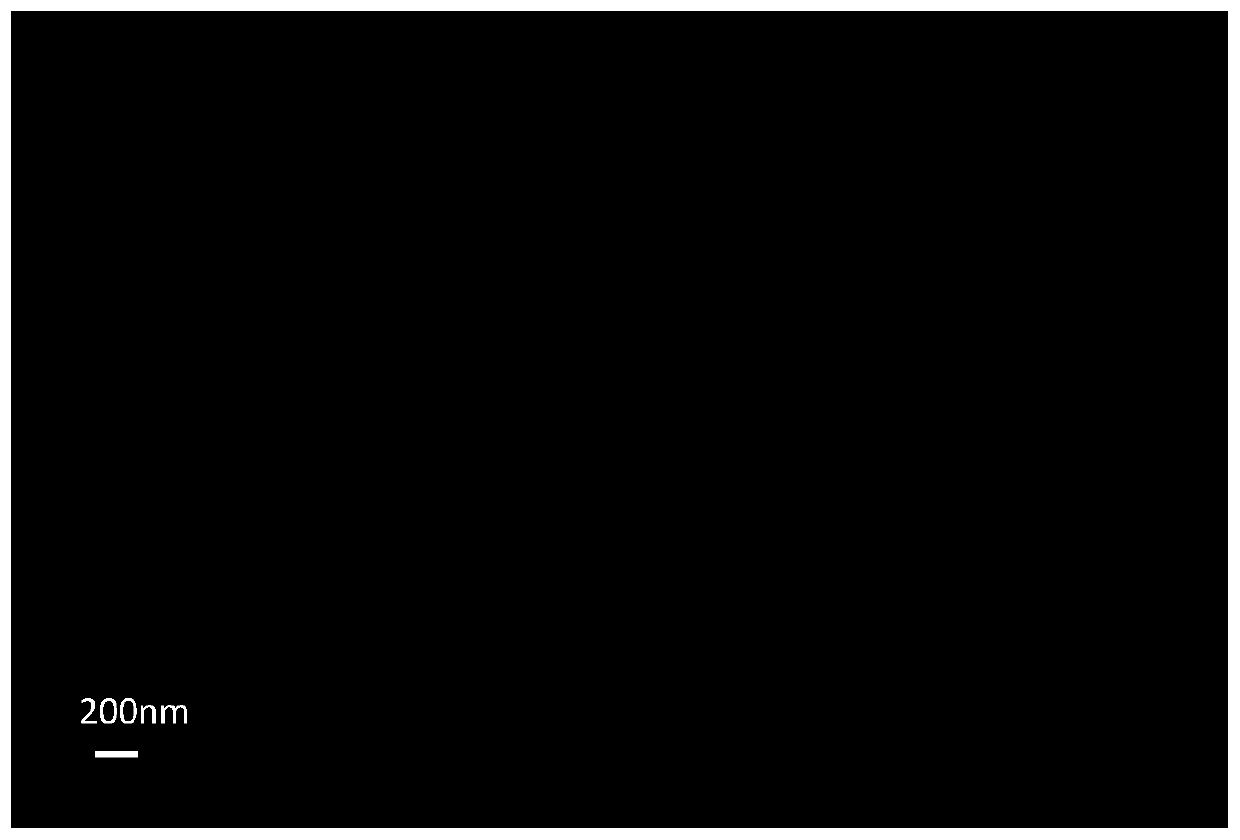ag@mofs/tio 2 Preparation method and application of photocatalyst
A technology of photocatalyst and reactor, applied in the direction of organic compound/hydride/coordination complex catalyst, physical/chemical process catalyst, chemical instrument and method, etc., can solve the problem of high photogenerated electron-hole recombination rate, achieve The effect of improving photocatalytic efficiency and improving separation rate
- Summary
- Abstract
- Description
- Claims
- Application Information
AI Technical Summary
Problems solved by technology
Method used
Image
Examples
Embodiment 1
[0032]Preparation of MIL-101: Add 4.002g of chromium nitrate nonahydrate and 1.661g of terephthalic acid into 70ml of aqueous solution A, stir at room temperature for 0.5h, then add 0.5ml of hydrofluoric acid solution B into mixed solution A , mixed and stirred for 0.5h, transferred the mixed solution C to the polytetrafluoroethylene reactor liner, then put the polytetrafluoroethylene reactor liner into the high-pressure reactor, and reacted at 220°C for 10h under high temperature and high pressure, and then put The solution was filtered through a 250-mesh stainless steel filter, washed three times with DMF and deionized water, and dried under vacuum at 150°C to finally obtain MIL-101.
[0033] Preparation of Ag@MIL-101: Add 0.1g of MIL-101 to 20mL of petroleum ether organic solution, ultrasonically mix, stir at room temperature for 30min to obtain solution A, then add 0.35ml of AgNO 3 Add dropwise to the stirring solution A, continue stirring at room temperature for 3 h, then...
Embodiment 2
[0035] Preparation of MIL-101: Add 4.000g of chromium nitrate nonahydrate and 1.660g of terephthalic acid into 60ml of aqueous solution A, stir at room temperature for 0.5h, then add 2ml of hydrofluoric acid solution B into mixed solution A, Mix and stir for 0.5h, transfer the mixed solution C to the polytetrafluoroethylene reactor liner, then put the polytetrafluoroethylene reactor liner into the high-pressure reactor, react at 220°C for 12h under high temperature and high pressure, and then put the solution Filter through a 250-mesh stainless steel filter, wash with DMF and deionized water three times, and vacuum-dry at 150°C to finally obtain MIL-101.
[0036] Preparation of Ag@MIL-101: Add 0.1g of MIL-101 to 20mL of petroleum ether organic solution, ultrasonically mix, stir at room temperature for 30min to obtain solution A, then add 0.35ml of AgNO 3 Add dropwise to the stirring solution A, continue stirring at room temperature for 3 h, then add 0.0327 g of sodium borohydr...
Embodiment 3
[0038] Ag@MIL-101 / TiO 2 Preparation: Add 0.1g of Ag@MIL-101 to 20mL of deionized water, mix with ultrasonic, stir at room temperature for 30min to obtain solution A, then add 0.003g of TiO 2 Slowly add to the stirring solution A, continue stirring at room temperature for 6 hours, then filter the solution through a 250-mesh stainless steel filter, wash with DMF and deionized water for 3 times, and vacuum-dry at 150°C to obtain Ag @MIL-101 / TiO 2 catalyst of light. XRD patterns of different photocatalysts ( figure 1 ) indicates that the noble metal and TiO 2 The load modification did not destroy the structure of MIL-101. From the scanning electron microscope ( Figure 2A ~ Figure 2C ) and transmission electron microscopy ( Figure 3A ~ Figure 3C ) can be seen the existence of an obvious three-layer structure.
PUM
 Login to View More
Login to View More Abstract
Description
Claims
Application Information
 Login to View More
Login to View More - R&D
- Intellectual Property
- Life Sciences
- Materials
- Tech Scout
- Unparalleled Data Quality
- Higher Quality Content
- 60% Fewer Hallucinations
Browse by: Latest US Patents, China's latest patents, Technical Efficacy Thesaurus, Application Domain, Technology Topic, Popular Technical Reports.
© 2025 PatSnap. All rights reserved.Legal|Privacy policy|Modern Slavery Act Transparency Statement|Sitemap|About US| Contact US: help@patsnap.com



